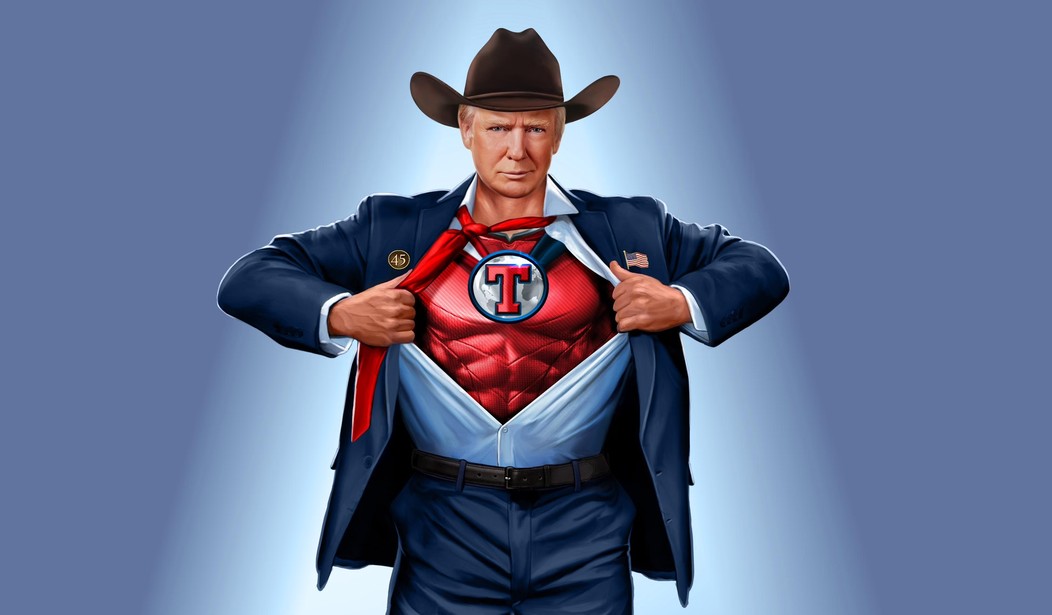Donald Trump has just recently sold another tranche of Trump Trading Card NFTs. This raises the question, “Trump Trading Card what?”
The TL;DR is that an NFT is a non-fungible token, a record of ownership of a specific digital asset (like an image) secured using cryptography and managed in a blockchain.
Lots of terminology there, so let’s expand a little.
An NFT is non-fungible as opposed to fungible. Something is fungible when it is functionally identical to another similar item. Dollar bills are fungible — ignoring coin collectors, each dollar bill is worth exactly as much as any other dollar bill. A “token” is just something that represents some idea or fact. A medieval knight carried a fair lady’s favor as a token of her affection; gold watches were given out as tokens of appreciation; a dollar bill is a token that represents an agreed-upon value. The dollar bill itself is worth far less than the dollar the bill represents (although check this space next year).
Another kind of fungible token is a Bitcoin. It can be transferred from hand to hand — or one Bitcoin wallet to another — just as a dollar bill can.
Non-fungible tokens are each promised to be unique. They represent, in a verifiable way, a particular digital asset. Often this is an image, and from here on I’m usually going to sloppily refer to the digital asset as an image, but it isn’t required to be an image — it’s just a bunch of bits, and might be a document or a video.
What is an NFT?
Okay, that’s all pretty abstract. So, what is an NFT? How are NFTs made, and how are they traded?
As the old Magyar recipe for chicken paprikás goes, first you steal catch a chicken. Here’s one, freshly made with DALL-E. Nice hat, huh?

As it stands, that chicken image is a “digital asset,” but it’s pretty damn fungible — right click and you can have your own copy.
Go ahead, it’s a nice chicken. With a nice hat.
To make it an NFT, you have to take another step called minting. To mint an NFT with your image, you take two further steps (although they usually happen under the covers):
- First, you generate some unique identifier for that particular chicken. This is done cryptographically by a digital signature. The basic idea behind a digital signature is that a computer program constructs a random number (a “hash”) using the image itself, along with the signer’s private key. The article I linked gives a lot of the details, but for our purposes, we care about two properties of the signature: we can confirm it’s a valid signature by using the signer’s public key, and — here’s the important part — if we change the image even slightly, the hash will be very different. The image is now represented by a token that is very hard to forge.
- Next, the token is registered on a blockchain. A blockchain is nothing more nor less than a computerized ledger, but one that uses cryptography to make it impossible to alter. Registration costs money paid to the registrar for putting the NFT on their blockchain. Right now, that costs $9.95 retail. (I’m willing to bet Trump doesn’t pay retail.)
Aside: The blockchain approach became well-known through bitcoin, but bitcoin is not the only use for a blockchain. (I wrote about bitcoin here at PJM, and you can watch me describe blockchain and its uses in this YouTube video I made for Surge LLC in 2018.)
So what can you do with an NFT?
Buy them and sell them, like any other piece of property. (And before you say, “but that’s not property,” think about copyrights and patents.)
Think of real trading cards. We’ll go all Star Trek here. Ben Sisko, a noted baseball fan, wants an original 1957 Sandy Koufax trading card. He can go to some auction site and bid on one (and we’ll ignore for the moment the Federation’s odd economics). He pays for it, and it arrives by Federation Express. All well and good — except, is it real or was it replicated?
We don’t have that problem right now, although we have to watch out for skeevy online auctions and eBay sellers. But digital assets, like the famous chicken above, are another problem. As record companies and musicians learned years ago, it’s really easy to replicate digital assets. One way to look at an NFT is as secure digital rights management. We could imagine a new variant of Spotify where you can only play a track if Spotify can verify you own the rights to play a particular track.
What Trump is selling is a registration that you have actually paid the Trump organization for your very own copy of the Trump Trading Card NFT.
Why the fuss about NFTs? Are they a scam?
Honestly, they’re very speculative. Obviously, NFTs have been participating in a speculative bubble, like when bitcoin was over $60,000 or the whole Dutch tulip mania. Very early on, NFTs by digital artist Pak sold for a total of more than $90 million.
You have to sort of admire the guy. Or group: it’s unclear if Pak is a single person or some kind of artist collective. Here’s the image:

I admit, I don’t quite get it. The picture looks very much like the sort of composition assignments I used to get in eighth-grade art class. And I got a copy of it, literally, by right-clicking the image in that Barron’s article. Of course, it’s not a registered copy.
Honestly, this isn’t a whole lot different from buying a signed and numbered print. Many artists do series of prints. This is a Picasso, and you can guess the price by the fact that it simply suggests interested buyers should “enquire.” It’s easy enough to buy an unsigned, unnumbered copy, but of course, that’s not an original, signed copy.
Are Trump NFTs a scam?
Good question. They are selling at a premium right now — as of May 16, 2023, they’re trading for around $210, with the price at offering being $99. That’s down massively from their high of $1,097. Will they keep their value or increase? Hard to say. Your mileage may vary. Consult your own legal advisors and financial professionals.
Something I haven’t seen anyone talk about, though, is what selling Trump Trading Cards means to Trump. Forget the buy side — on the sell side, Trump is selling something that costs almost nothing to make for $99, and it’s not a campaign contribution — it’s merch. If I understand campaign finance law — not a great assumption, but this actually seems pretty clear — anyone can buy them and can buy as many as Trump can sell.
Watch for Hillary Clinton NFTs, though. I’m amazed they aren’t already available.
Do NFTs have a future?
I think, as a technology, NFTs have some real possibilities. The notion of using them for digital rights management of music is probably a bus that has sailed — people are too used to getting music nearly for free. But an aspect of NFTs I haven’t talked about is that they can be attached to “smart contracts” that are also managed on a blockchain. These are simply computer programs that manage the NFT, so if you sell an NFT, it can have a smart contract attached to automatically change the ownership registration of the NFT.
NFTs could be used to maintain pretty much anything that is currently handled with a government registration, from marriage licenses to death certificates. It would require some legal action or legislation to make it clear that a properly-run blockchain ledger is a binding legal document, but that ought to be a no-brainer. So maybe within 10 years.
Should you buy them?
Did I mention that these are very speculative? They are. If you got in on the original offering of either tranche, you have at least paper profits. (If you bought at the top, I hope you can use them to offset capital gains or something.)
Of course, if all you want is to support Trump’s Presidential aspirations, then these might be perfect.











